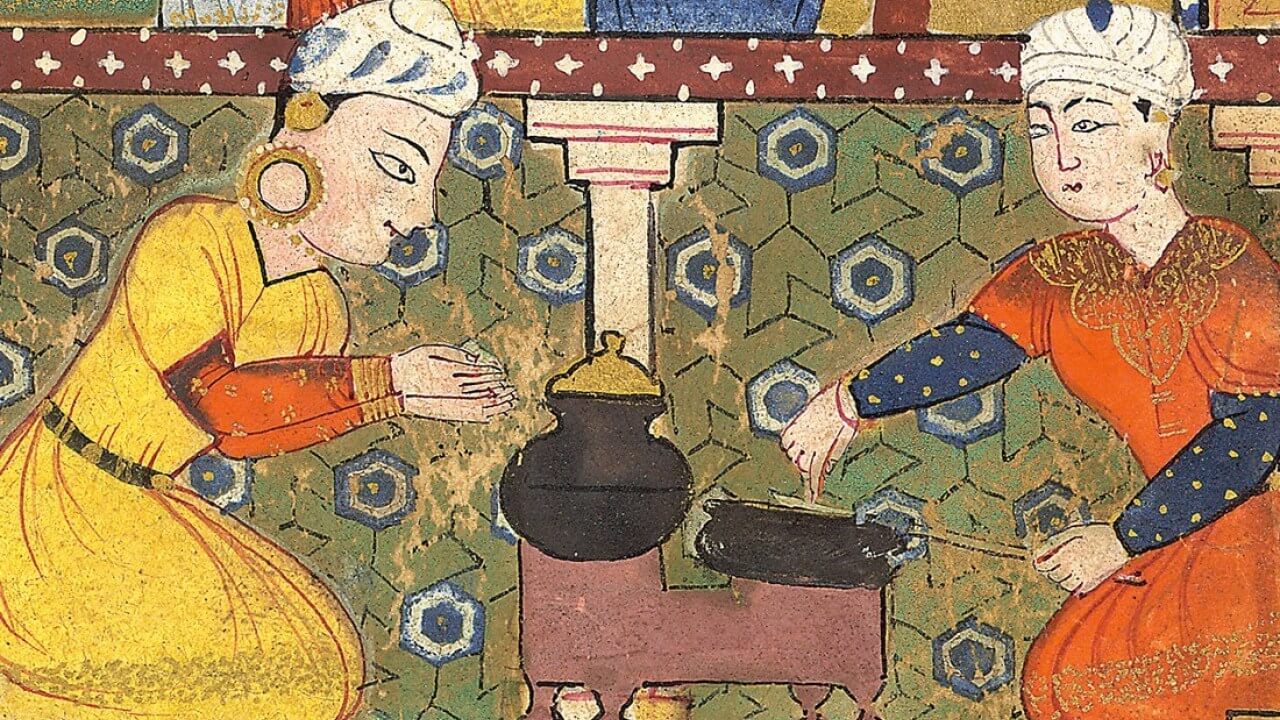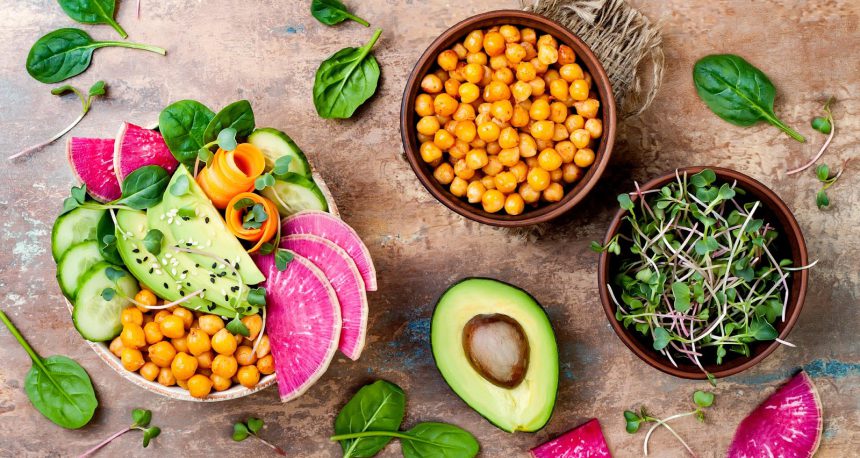By:Dr. Kurosh Resalati

The growth of villages, cities and urbanization has brought many changes with it in human nutrition. The first communities and cities arose in ancient Egypt, western Asia, Greece, and Mesopotamia (now southern Iraq). Early urbanites considered agriculture and animal husbandry as necessity and used a variety of products for their nutrition.
The growth of villages, cities and urbanization has brought many changes with it in human nutrition. The first communities and cities arose in ancient Egypt, western Asia, Greece, and Mesopotamia (now southern Iraq). Early urbanites considered agriculture and animal husbandry as necessity and used a variety of products for their nutrition.
Iran is the first country in the world in terms of geographical location and diverse climate in which early humans were engaged in agriculture and animal husbandry. (Two experts and archaeologists, Arthur Keith and Dr. Ernst Herzfeld, have proved in a book called Iranian Industries that agriculture and civilization began on the Iranian plateau.)
Excavations carried out in some parts of Iran, such as Shushtar, Damghan, Persepolis and Kashan’s Sialk Archeological Hills, show that the history of agriculture in Iran is more than 6,000 years old. The history of nutrition in Greece also shows that in ancient times the Greeks ate more plants and in the upper classes, consumption of mutton and poultry, fish and dairy products was also common. Abundance of olive oil had also boosted the use of this product in meals with bread and other foods due to the numerous olive trees in the region.
In ancient Rome, people were fully engaged in agriculture and the average person mostly consumed grains, legumes, fruits and some vegetables with cereals considered as a main fare. Meat and poultry consumption was largely limited to the Roman aristocracy.
 As the Roman Empire grew and its army expanded its reach into farther corners of the world, the nutritional habits of Roman people, especially the aristocracy class, changed. With each conquest of foreign lands, Romans came into contact with inhabitants of those cities and villages and their local foods and nutritional habits. Soon they took with them the new indigenous food culture back to Rome. From history books we have learned that Romans, especially the aristocracy and the rich resorted to extremes in the use of nutritious and delicious foods, while ordinary people consumed a simple diet. Interestingly, the first cookbook by the name of “Deipnosphistae” by Athenaeus was published in the second century AD, which attests to the special appeal of cooking and food for the Romans. This cookbook, which one would imagine could be found only in the kitchens of the affluent aristocracy, describes how to prepare meat and vegetable dishes and introduces different cooking methods from conquered lands. There exists another curious mention in the annals of food, this one a child’s diet written on a tablet.
As the Roman Empire grew and its army expanded its reach into farther corners of the world, the nutritional habits of Roman people, especially the aristocracy class, changed. With each conquest of foreign lands, Romans came into contact with inhabitants of those cities and villages and their local foods and nutritional habits. Soon they took with them the new indigenous food culture back to Rome. From history books we have learned that Romans, especially the aristocracy and the rich resorted to extremes in the use of nutritious and delicious foods, while ordinary people consumed a simple diet. Interestingly, the first cookbook by the name of “Deipnosphistae” by Athenaeus was published in the second century AD, which attests to the special appeal of cooking and food for the Romans. This cookbook, which one would imagine could be found only in the kitchens of the affluent aristocracy, describes how to prepare meat and vegetable dishes and introduces different cooking methods from conquered lands. There exists another curious mention in the annals of food, this one a child’s diet written on a tablet.
This tablet, whose origin dates back to 1900 BC was originally found in the Sumer region in southern Mesopotamia and is now kept in the Archaeological Museum in Istanbul, Turkey.
Predictably, throughout history religion and tradition have also played an important role in people’s diet and foods. Different religions at different times have gone into great explanations of what to eat and what foods to refrain from, and local traditions have given detailed guidelines for nutrition during pregnancy, breastfeeding and even fasting.

Records show that physicians in ancient Iran, Greece, and China also prescribed special diets as an important element of treatment of their patients. Muhammad ibn Zakariya al-Razi, a 10th century Iranian physician who is known by many as the father of science of nutrition and children’s diet, has various dietary recommendations in his book (Hifzosseha).
Despite the great importance of the field of nutrition in preserving human health throughout history, until almost the end of World War One, there was no official organization or institution working in this field. In 1917 the first association of nutritionists by a group of nutrition experts in America was founded. The association first published the Scientific Journal of Dietitians in 1925 and gradually expanded the scope of its activities in food service management for nutrition centers. Graduates of this field, called dietitians must use all their information and knowledge to help establish and improve human health.
Nowadays diet therapy is essential in both modern and traditional medicine and people around the world spend millions of dollars to maintain their health and fitness by following a healthy diet and using nutritional supplements and vitamins for health and fitness and to fight obesity or for weight loss. As such, the term diet-therapy means the use of a balanced diet not only for patients but also for healthy people. This means that healthy people too should use a proper diet to avoid malnutrition and stay in perfect health. Therefore, all people at any age and any occupation who need help with myriad of health issues have the option to observe the basic principles of nutritional facts under the supervision of physicians and nutritionists. In summary, water and food are the basic human needs from birth and human health depends on healthy nutrition and mobility.
Today, scientists have noticed that populations (with no health preconditions) who observed a healthy diet and lifestyle fared better during the coronavirus pandemic. For this reason the section below briefly reviews a number of best-practices and principles of health and proper nutrition:
Five tips to maintain a healthy diet:
Today, the outbreak of coronavirus is making life more difficult for families around the world. With the closure of schools and kindergartens, many parents these days are forced to stay home and care for their children, work full time and take on other responsibilities. One of the daily challenges for the family has always been “What food should I make for dinner?” But panic buying and disorder in the food supply system made it more difficult to find some food items and imposed more difficulties on families. For many people, unemployment and loss of income also has made buying food even more challenging. Times like this, parents may choose to prepare food using processed foods as the fastest and least expensive way to feed the family, while healthy, inexpensive, and acceptable food alternatives are also available. Here are five ways to help feed your children in order to plan a varied and nutritious diet that can support their growth and development as well as establish healthy eating habits.
- Eat enough fruits and vegetables: buying, storing and cooking fresh vegetables poses a challenge for families especially when parents are advised to limit their exposure outside the home. But the important thing is to make sure you put enough fruits and vegetables in your child’s diet if possible. Therefore, whenever it is possible to get fresh produce, be sure to get and consume them. Fruits and vegetables can also be used frozen, which preserves more nutrients and flavor. You can use vegetables to make a variety of soups, stews and other dishes. Once you’ve prepared a dish you can freeze it if possible and heat and consume it in no time when needed.
- When fresh produce is not available, you can substitute canned or dried produce: It is always best to use fresh produce, but when they are not available, there are other healthy alternatives that can be easily stored and used in cooking. Canned legumes such as beans and peas can provide large amounts of nutrients to the body and can be stored for long periods of time, sometimes for months or even years to be used in a variety of foods. Canned fatty fish such as sardines and salmon are rich in protein, fatty acids, Omega-3s, and a variety of vitamins and minerals. These foods can be eaten cold in sandwiches, salads or with pasta or eaten cooked as part of a hot meal. Canned vegetables, such as tomatoes, have fewer vitamins than fresh produce.
- However, when fresh or frozen vegetables are not easy to find, canned vegetables can be a good choice. Dry foods such as beans, legumes and grains such as lentils, chickpeas, and rice all contain nutrients. These tasty and relatively inexpensive foods have high satiety and can be stored for a long time. Save healthy snacks: Children need to eat one or two snacks during the day in order to be active throughout the day. Instead of giving children salty or sweet snacks, use healthier alternatives such as nuts, cheese, yogurt (preferably plain, non-fruity yogurt), pieces of fruit or dried fruit, hard-boiled eggs, or other healthy choices. These foods are nutritious and filling and help build healthy eating habits throughout life.
- Limit processed foods: Since it may not always be possible to buy fresh food, try to reduce the amount of processed foods in your shopping cart. Ready-to-eat foods, ready-to-eat and packaged snacks and desserts often contain large amounts of saturated fatty acids, sugar, and salt. If you have to buy processed foods, pay attention to the nutrition label and try to choose items that contain lower amounts of these substances (the amount of sugar, fat, and salt in the food label should not be red). Also, try to avoid sugary drinks as much as possible and drink plenty of water instead. Adding pieces of fruit and vegetables such as sour lemons, cucumbers, or berries (such as strawberries or white berries) to the water is the best way to add a pleasant flavor to it.
- Try to make cooking and dining a fun and meaningful activity on your family to-do list: Cooking and dining is an interesting way to create healthy daily habits, strengthen family relationships and create fun activities. If possible, ask children to help you prepare food. Younger children can help with washing or tidying up food stuff, while older children can take part in more complex activities, such as helping you set the table. Try to eat as much as possible with the whole family at a certain time, creating such a habit can be helpful in reducing children’s anxiety in these stressful situations.



